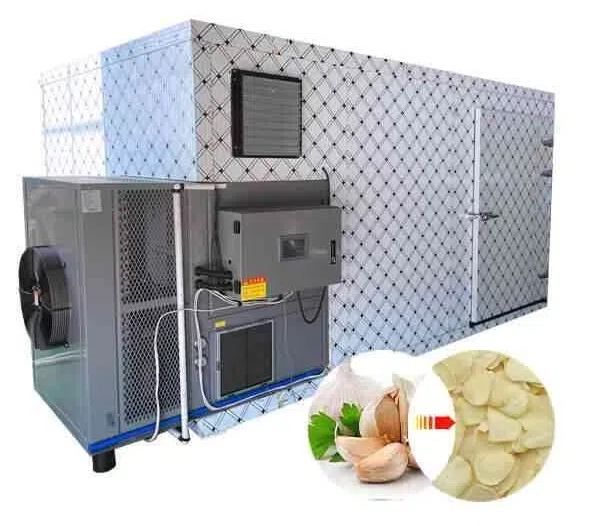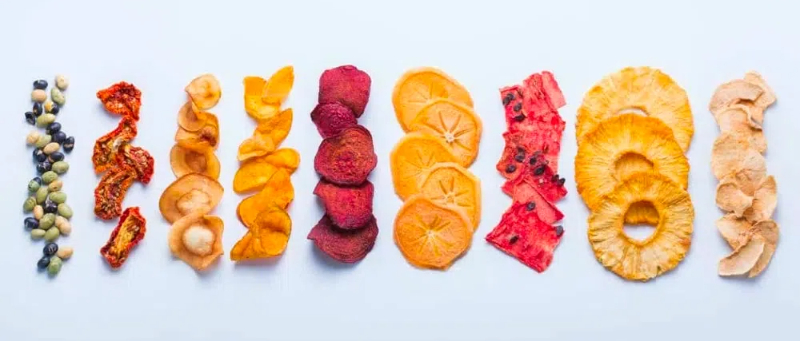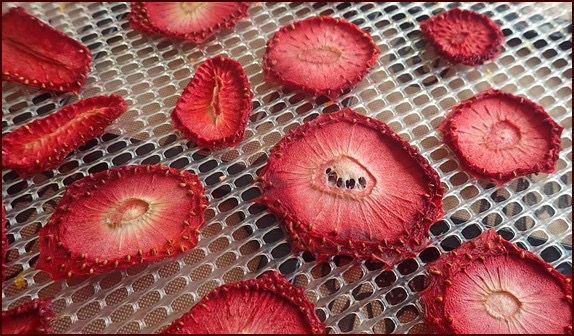
Content Menu
● Understanding Food Dehydration
● Benefits of Using a Food Dehydrator
● What Foods Can You Dehydrate?
>> 1. Fruits
>> 2. Vegetables
>> 3. Meats
>> 4. Herbs
>> 5. Grains & Legumes
>> 6. Complete Meals
● How to Dehydrate Food
● Tips for Successful Dehydration
● Dehydration Techniques
● Conclusion
● FAQ
>> 1. What is the best temperature for dehydrating fruits?
>> 2. Can I dehydrate cooked meals?
>> 3. How long do dehydrated foods last?
>> 4. Do I need to blanch vegetables before dehydrating?
>> 5. Can I use a regular oven instead of a dehydrator?
● Citations:
Food dehydrators have become increasingly popular for their ability to preserve food while retaining nutrients. This article will explore the various types of foods you can dehydrate, the benefits of using a food dehydrator, and tips for maximizing your dehydrating experience.

Understanding Food Dehydration
Dehydration is one of the oldest methods of food preservation. By removing moisture from food, you inhibit the growth of bacteria, yeast, and mold, which can cause spoilage. A food dehydrator works by circulating warm air around the food at low temperatures (typically between 95°F to 165°F), allowing moisture to evaporate slowly while preserving the food's nutrients and flavor.
Benefits of Using a Food Dehydrator
- Extended Shelf Life: One of the most significant benefits of an electrical food dehydrator machine is its ability to extend the shelf life of your food. By removing moisture, the dehydrator inhibits bacterial growth and spoilage, allowing you to store your favorite fruits, vegetables, and snacks for months. This means fewer trips to the grocery store and less food waste.
- Nutritional Retention: Unlike some preservation methods that can degrade the nutritional value of food, dehydration helps retain essential vitamins and minerals. The electrical food dehydrator machine ensures that your dried fruits and veggies maintain their health benefits, giving you a nutritious snack option without added preservatives.
- Cost-Effective Preservation: Investing in a food dehydrator can save you money in the long run. Dehydrating your food at home is often more cost-effective than purchasing pre-packaged dried goods. With an electrical food dehydrator machine, you can buy in bulk and preserve your food at a fraction of the cost.
- Convenience and Versatility: An electrical food dehydrator machine offers unparalleled convenience. It allows you to dehydrate a variety of foods, from fruits and vegetables to herbs and even meats. This versatility makes it an indispensable tool for anyone interested in exploring different preservation methods and recipes.
- Healthy Snack Options: Say goodbye to unhealthy snacks laden with preservatives and additives. Dehydrated snacks are a healthier alternative. You can make your own dried fruit, vegetable chips, or jerky, ensuring that you control the ingredients and enjoy guilt-free treats.
- Space-Saving Storage: Dried food takes up significantly less space than fresh or frozen alternatives. By using an electrical food dehydrator machine, you can store more food in less space, making it easier to organize your pantry and reduce clutter.
- Enhanced Flavor Concentration: Dehydration concentrates the flavors of fruits and vegetables, making your snacks more flavorful. Whether you're enjoying a sweet apple chip or a savory vegetable crisp, the taste is intensified, providing a more satisfying snacking experience.
- Eco-Friendly Preservation: Using an electrical food dehydrator machine is an eco-friendly choice. It reduces food waste by enabling you to preserve excess produce. Moreover, it uses less energy compared to freezing, making it a greener option for food storage.
- Preparation for Cooking: Dehydrated foods can be rehydrated for cooking, adding a new dimension to your culinary repertoire. You can prepare soups, stews, and other dishes with dried ingredients, making meal preparation more efficient and flavorful.

What Foods Can You Dehydrate?
You can dehydrate almost any type of food. Here's a comprehensive list:
1. Fruits
Fruits are among the most popular items to dehydrate due to their natural sweetness and flavor concentration once dried. Common fruits include:
- Apples
- Bananas
- Strawberries
- Mangoes
- Pineapples
- Peaches
- Pears
- Grapes (to make raisins)
Dehydrated fruits make excellent snacks on their own or can be added to cereals, trail mixes, or baked goods for added flavor.
2. Vegetables
Dehydrated vegetables are great for soups, stews, and snacks. Popular choices include:
- Carrots
- Bell Peppers
- Zucchini
- Tomatoes
- Onions
- Spinach
- Mushrooms
These vegetables can be rehydrated easily when needed or used as crunchy toppings for salads or casseroles.
3. Meats
Lean meats are ideal for making jerky. Consider dehydrating:
- Beef
- Chicken
- Turkey
- Fish (like salmon or tuna)
Homemade jerky is not only healthier but also allows you to customize flavors according to your preferences.
4. Herbs
Fresh herbs can be dehydrated to create flavorful seasonings:
- Basil
- Oregano
- Thyme
- Rosemary
Dried herbs retain their flavor well and can be used in various dishes throughout the year.
5. Grains & Legumes
You can also dehydrate cooked grains and legumes, which can be rehydrated later:
- Rice
- Quinoa
- Lentils
These ingredients provide essential nutrients and make meal prep quick and easy when rehydrated.
6. Complete Meals
Prepared meals can also be dehydrated for easy storage and rehydration later. Examples include:
- Soups (like minestrone)
- Stews (like beef stew)
- Pasta dishes
This method is particularly useful for campers or hikers who want nutritious meals on-the-go without carrying heavy ingredients.
How to Dehydrate Food
To effectively dehydrate food, follow these steps:
1. Preparation: Wash and cut your food into uniform pieces to ensure even drying.
2. Blanching: For some vegetables like carrots or broccoli, blanching (briefly boiling) before dehydration helps retain color and nutrients.
3. Arranging: Place food on dehydrator trays in a single layer without overlapping.
4. Temperature Settings: Set your dehydrator according to the type of food:
- Fruits: 135°F
- Vegetables: 125°F
- Meats: 160°F
5. Drying Time: Drying times vary based on the type of food and thickness; it may take anywhere from 4 to 12 hours.
6. Storage: Once dried, store your food in airtight containers in a cool, dark place.
Tips for Successful Dehydration
To ensure optimal results when using a dehydrator:
- Rotate Trays: If using a stacked dehydrator, rotate trays occasionally for even drying.
- Avoid Fatty Foods: Foods high in fat do not dehydrate well as they can go rancid over time.
- Use Non-Stick Sheets: For purees or sticky foods like fruit leather, use non-stick sheets to prevent sticking.
Dehydration Techniques
Understanding various techniques can enhance your dehydration experience:
1. Pretreating Fruits: To prevent browning in fruits like apples or bananas, dip them briefly in lemon juice or ascorbic acid before dehydrating.
2. Cutting Uniformly: Ensure all pieces are cut uniformly; this helps them dry evenly without some being over-dried while others remain moist.
3. Conditioning Dried Foods: After drying, allow dried foods to cool before storing them in airtight containers; this helps equalize moisture levels among pieces.
4. Vacuum Sealing: For long-term storage of dried foods, consider vacuum sealing them to prevent moisture ingress and extend shelf life further.
5. Experimenting with Flavors: Enhance flavor by seasoning foods before dehydration; spices like garlic powder or chili powder can add depth to vegetable chips or jerky.
Conclusion
Food dehydrators offer an excellent way to preserve a wide variety of foods while retaining their nutrients and flavors. From fruits and vegetables to meats and complete meals, the possibilities are endless with proper techniques and storage methods at hand. By investing time in learning how to use these machines effectively, you can enjoy delicious dehydrated snacks year-round while minimizing waste and maximizing nutrition.

FAQ
1. What is the best temperature for dehydrating fruits?
The ideal temperature for dehydrating fruits is typically around 135°F.
2. Can I dehydrate cooked meals?
Yes, you can dehydrate cooked meals as long as they contain low-fat ingredients; this method is great for camping or quick meal prep.
3. How long do dehydrated foods last?
When stored properly in airtight containers, most dehydrated foods can last several months up to two years depending on the type of food.
4. Do I need to blanch vegetables before dehydrating?
Blanching is recommended for certain vegetables as it helps preserve color and nutrients but is not always necessary; it depends on the vegetable type.
5. Can I use a regular oven instead of a dehydrator?
Yes, you can use a regular oven at low temperatures; however, it may not be as efficient as a dedicated dehydrator due to uneven heat distribution.
Citations:
[1] https://etsolutions.in/10-amazing-benefits-of-electrical-food-dehydrator-machines/
[2] https://www.youtube.com/watch?v=lEUA2t2XD5M
[3] https://www.backpackingchef.com/dehydrating-food.html
[4] https://www.webstaurantstore.com/guide/741/food-dehydrators-buying-guide.html
[5] https://www.osbheatpump.com/news/how-to-use-a-food-dehydrator-10-useful-tips-for-beginners-and-advanced-users/
[6] https://www.thepurposefulpantry.com/essential-dehydrated-foods-for-the-pantry/
[7] https://www.bestbuy.com/discover-learn/10-reasons-to-buy-a-food-dehydrator/pcmcat1634332391134
[8] https://homesteadingfamily.com/preservation-101-intro-to-dehydrating-food/
[9] https://www.foodie.com/1398031/foods-should-dehydrate-list/
[10] https://www.webmd.com/diet/dehydrating-food-good-for-you
[11] https://www.goodhousekeeping.com/appliances/a31904157/what-is-a-dehydrator/
[12] https://learn.eartheasy.com/guides/a-beginners-guide-to-dehydrating-food/
[13] https://fooddrinklife.com/best-foods-to-deydrate/
[14] https://brodandtaylor.com/pages/dehydrating
[15] https://www.breville.com/content/breville/us/en/blog/cooking/how-to-use-a-dehydrator/_jcr_content/root/container_741553154/container/image.coreimg.85.1200.jpeg/1718622778417/how-to-use-dehydrator.jpeg?sa=X&ved=2ahUKEwjEyeuUjeqKAxXRUkEAHaLQIYcQ_B16BAgEEAI
[16] https://www.healthline.com/nutrition/dehydrated-food
[17] https://www.allrecipes.com/article/how-to-use-a-food-dehydrator/
[18] https://community.waring.com/blog/p/13or1/the-remarkable-benefits-of-adding-a-food-dehydrator-to-your-kitchen-arsenal
[19] https://www.freshoffthegrid.com/dehydrating-food/
[20] https://www.youtube.com/watch?v=7wB8g22taqo











